Dianthus (Sweet William, carnation, pinks, clove pinks, cheddar pink, gillyflower) is a typical ornament in many buildings from the Greek and Roman era. That colorful perennial flower has 300 varieties which attract bees, butterflies, and hummingbirds. Some of them are tiny, tall less than 5 inches (13 cm), but the tallest types can reach over 3 feet (0.9 m) height.
Originated in Europe, North Africa, and Asia, it can flourish in different colors. The most popular are white, multi-colored, champagne, neon yellow, lilac, pink, magenta, purple, and red. Depending on the variety, the blooms can be single or double, but always with five jagged-edged petals. Once flowers wither, you can enjoy unique narrow, bluish-grey leaves.
The Facts about Dianthus
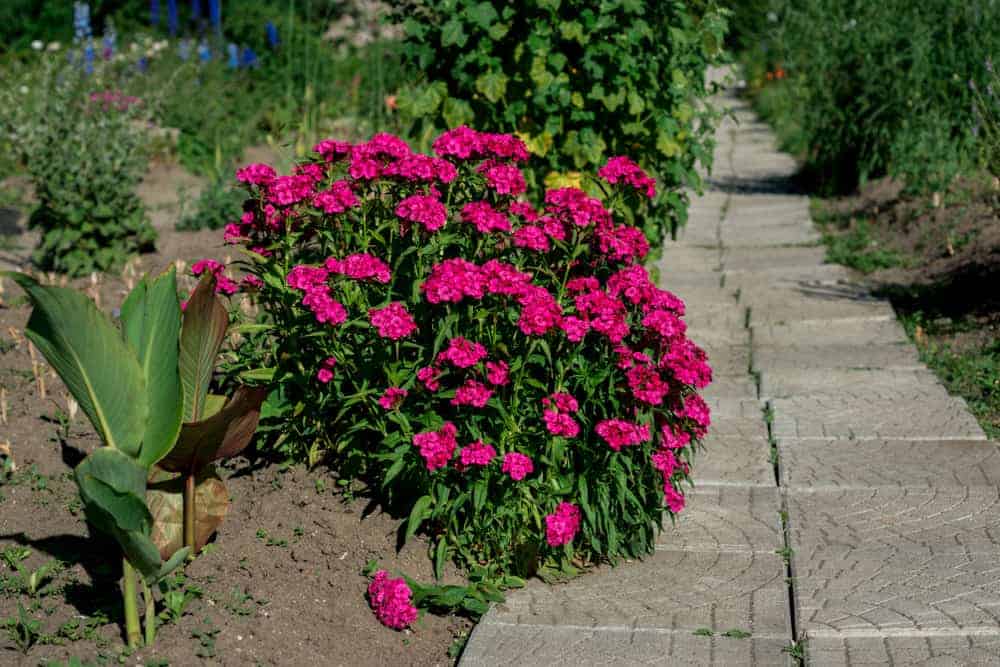
The name of this lovely plant is a combination of two Greek words for God (dios) and flower (anthos), which makes it a ‘flower of the gods.’ There are a few explanations for it.
According to the most popular myth, the Greek goddess of the hunt Diana was angry with a flute-playing shepherd. She blamed him for scaring her prey.
As a punishment, she dug his eyes and threw them on the ground. The legend said that red carnations started growing at the place the shepherd’s eyes fell.
On the other hand, Christians believe that carnations flourished along the Via Dolorosa in the places where Mary’s tears fell to the ground. In both cases, this flower was a symbol of innocent blood.
Nowadays, these blooms on branched or simple stems are highly prevalent in rockeries and cottage gardens. Thanks to outstanding longevity after cutting, this fragrant plant is a flower of choice for floral arrangements and boutonnieres.
The Most Popular Types of Dianthus
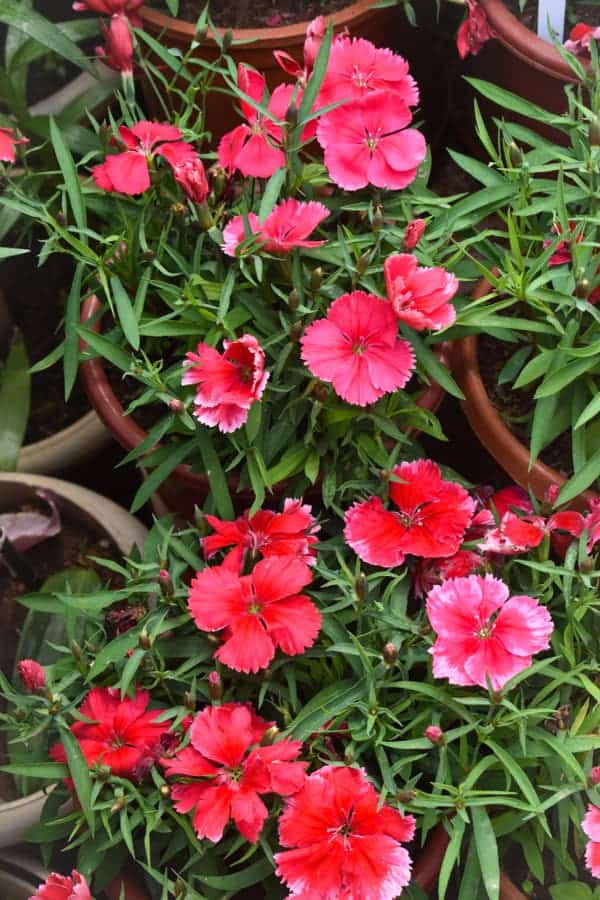
- Dianthus Caryophyllus (Carnation) – These white, pink, red, or salmon flowers prefer humid conditions of the South. No one knows their origin, but it is probably the Mediterranean region.
- Dianthus Barbatus (Sweet William) – These exceptionally fragrant flowers native to Southern Europe and Asia grow in different conditions throughout the US. Their serrated-edges blooms can be white, salmon, pink, or red.
- Dianthus Chinensis (Hardy Annual Dianthus) – You can enjoy the white, pink, or red blooming of these flowers well-known as China or Rainbow pinks from spring to fall. This variety originated in Russia, China, Korea, and Mongolia.
- Dianthus Grataniapolitensis (Cheddar Pinks) – Often used as a groundcover, these rose-pink flowers bloom from May to June. Since 1975, this variety is a protected species in the UK.
- Dianthus Deltoides (Maiden Pinks) – These pink or red flower originated in Europe and western Asia. Blooming throughout summer, they are an ideal choice for a groundcover.
- Dianthus Plumarius – This pink flower originating in Slovenia and Austria blooms from May to August.
- Dianthus Pavonius – Enjoy the unusual purple-pink blooms of this variety with a blue or brown center from April to May.
- Dianthus Seguieri – These lovely, shade of medium pink variety flourishes from June to September in dry areas.
- Dianthus Armeria – Pick out this grassy-pink flower originated in Europe, and you won’t regret. You can enjoy its lovely petals arranged in small clusters throughout the summer.
- Dianthus Superbus – You can choose a white, red, or purple variety with fringed or regular edges. It is a very popular Dianthus, indeed.
How to Plant Dianthus Flower in Your Garden
Propagating by cuttings
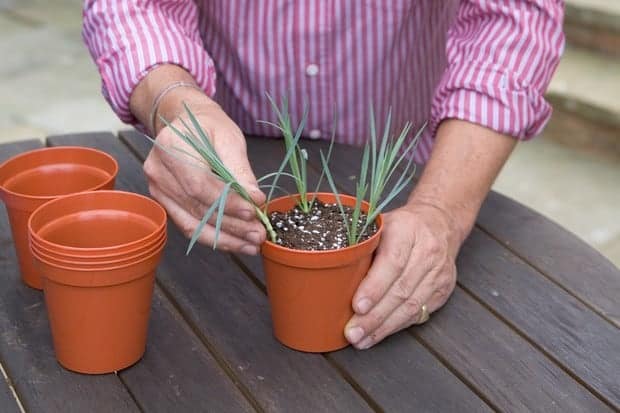
It is an excellent option if you want to plant Dianthus on your own, but you don’t want to deal with complicated procedures. You can use cuttings from the plants growing in your garden. Do it in spring after the last frost or in autumn when the period of flourishing ends.
Use a gardening knife and cut the strong stem with three leaf nodes and without a flower at an angle. Put it into a pot filled with a mix of peat and sand. Water abundantly until the root develops properly after approximately two months. Then you can transplant the new flower into the flowerbed.
There is a possibility to plant cuttings directly into the flowerbed. Prepare the ground with a garden rake to provide excellent aeration. Remove old roots and stones from the place and dig holes approximately 6 to 12 inches (15 – 30.5 cm) apart.
Keep in mind that the holes should be at least twice as deep as the root ball. Fill them with 1 inch (2.5 cm) of quartz sand for better drainage and add organic compost to promote lush growth of the new plants.
Put cuttings into the holes. Take care to leave 1 inch (2.5 cm) of space between the edge of the pot and the surface of the soil. It is crucial for proper watering.
Propagating by seeds

Even though most Dianthuses are perennials, they actually live short. Therefore, you may collect seeds from your favorite variety and try to sow them the following season. Be prepared that sowing is not the most productive way to get new plants, but it is possible.
Collect seeds from the flower after the period of flourishing passes. After picking up seeds from the opened capsules, you should dry them for a day or two. Keep them in the dark box protected from light and moisture until spring.
In March, place seeds into special seed-boxes or a pot and cover them with the tiny layer of the soil. Spray the ground with water when needed and keep the container covered with a transparent foil.
Provide the temperatures of 60 F (15.5 C) for germination and keep seedlings away from direct sun exposure. Thin them as soon as reaching 1 inch (2.5 cm) height. The time for re-potting seedlings into a flowerbed is a moment when they are approximately 3 inches (7.6 cm) tall.
Propagating by division
The division is the third option when you want to propagate your Dianthus. It is also an excellent way to diminish the mother plant.
The right moment is a period before budding. Dig around the mother plant, about 6 inches (15 cm) deep. Cut under the clumps and dig the roots up from the ground.
Separate the clumps and divide them into four or five sections. Take care that each one has the top growth and a piece of root. Throw out old and unhealthy pieces from the center.
Store clumps in a container and keep them in the dark place. Cover the pot with a piece of wet newspaper to prevent drying out. Plant these pieces into the garden as soon as possible.
How to Care Dianthus in Your Garden
Soil
To get the full blossomy carnation, you should plant it in the humus or chalky ground. It needs to be well-drained, moist, and nutrient-rich. Avoid heavy clay because of poor drainage. This plant can’t stand the soggy soil.
Also, take care that the range of pH is from neutral to slightly alkaline. When the soil is too acid, you should apply dolomitic limestone or ashes. They will increase its alkalinity.
For carnations growing in a flower box, you should provide a high-quality substrate. Those containing natural clay will help your flowers thrive and become healthy and resistant to diseases.
Light
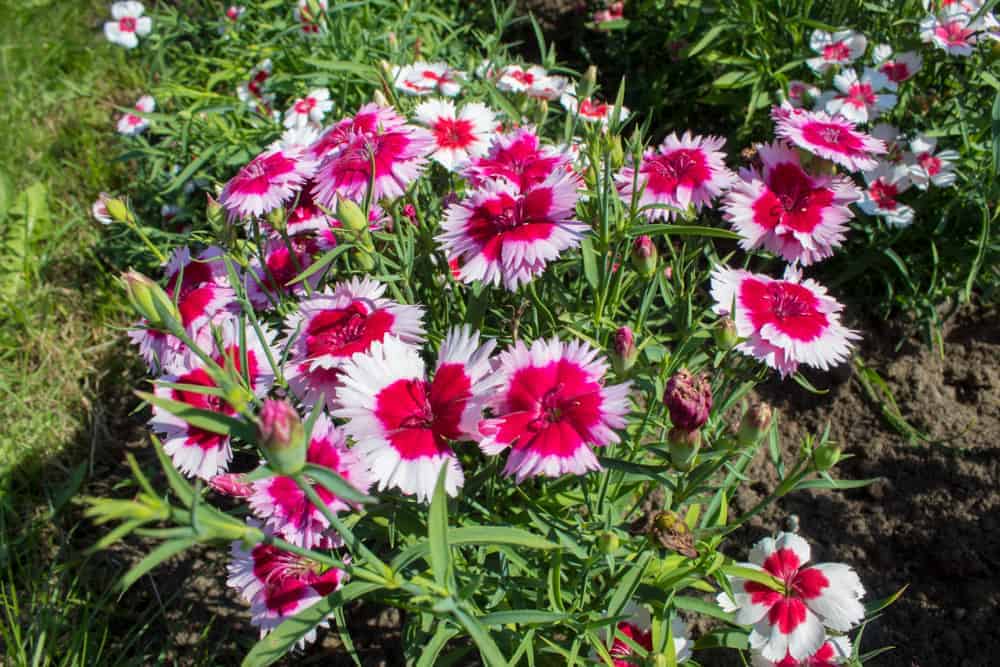
Dianthus likes growing in a sunny, wind-protected place. It can’t thrive and bloom if you plant it in a half-shaded part of the garden. Therefore, provide at least six hours of sunlight a day for this lovely flower, and enjoy its fantastic blooming throughout spring.
Temperatures
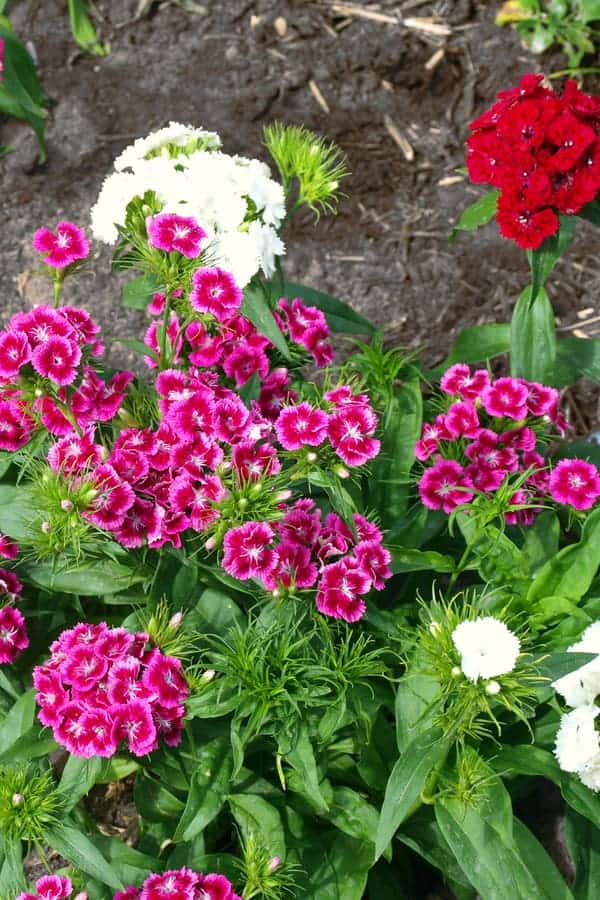
Dianthus can tolerate a light frost, but be careful. It can’t survive a deep freeze. When the temperatures drop below 40 F (4.5 C) in winter, try to protect your flowers with a frost blanket.
On the other hand, this plant goes dormant throughout summer while the days are hot and temperatures are above 85 F (29.5 C).
Watering
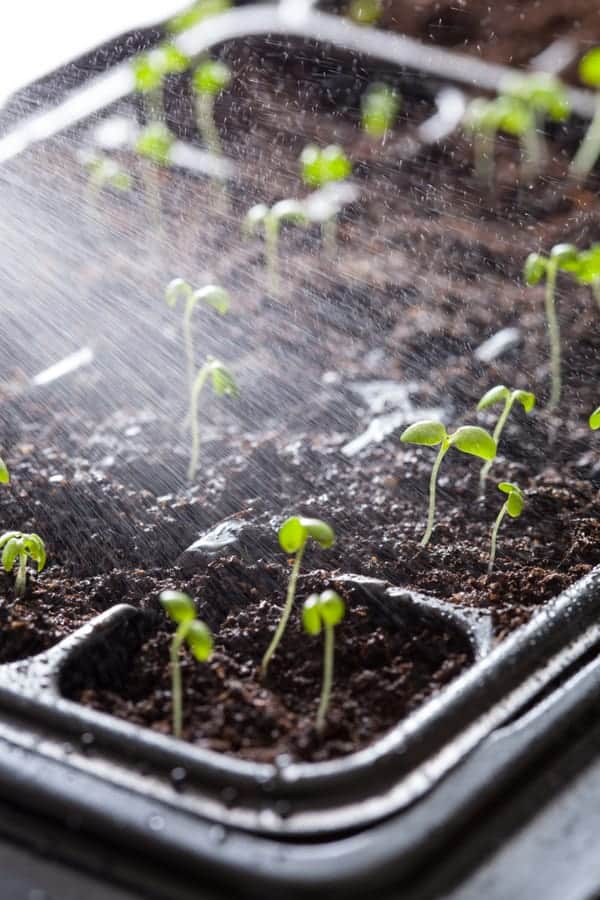
Dianthus doesn’t like growing in the water-soaked ground. It will be enough to give your plant approximately 1 inch (2.5 cm) of water once a week. Add water when the soil becomes dry, and you can’t put your thumb at least 1 inch (2.5 cm) into it.
Fertilizing
Since Dianthus is a light feeder, applying a shovelful of organic compost once a year will be enough nutrients for it. If you find it necessary, you can add a slow-release fertilizer in spring, before the time of blooming.
However, it is recommended to add a starter or manure when repotting, replanting, or pruning the mature plant. If you grow this flower in a pot, you should apply liquid fertilizer at least once a month.
Mulching
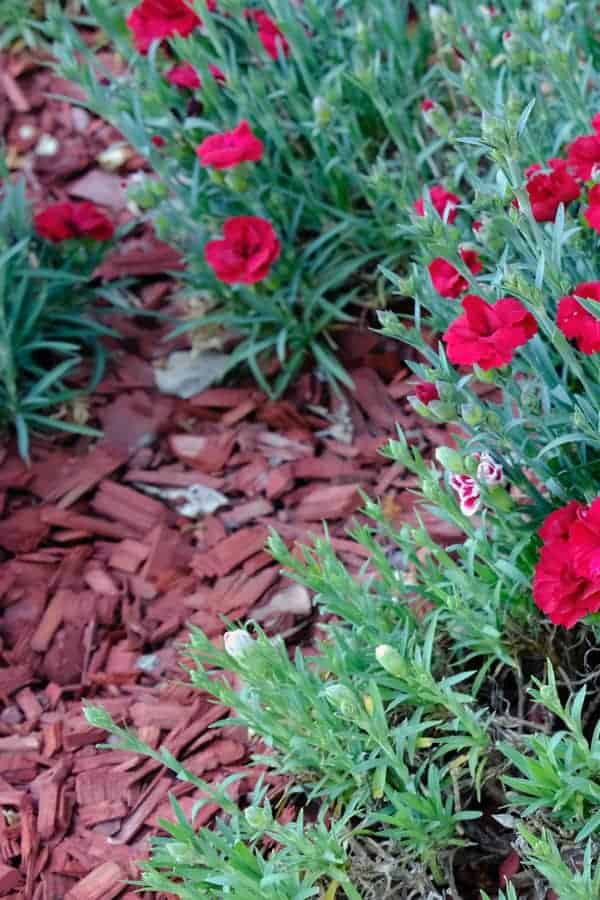
Mulching is an ideal way to keep the ground moist and weed-free. However, take care to place mulch away from the base of stems to avoid rot.
To protect your Dianthus during winter, you should add a 4 inches thick (10 cm) layer of mulch after the first severe frost.
Wood fiber and bark mulch will provide excellent airflow for your plant. On the other hand, white perlite and peat may support the stability of this flower’s structure.
Don’t forget to remove mulch in spring before your plant starts growing.
Supporting
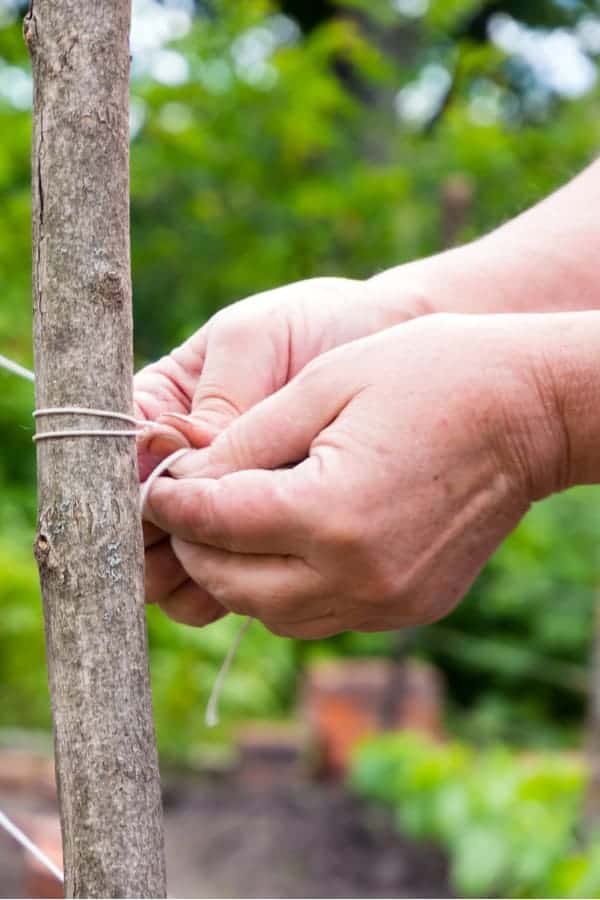
You will need to support your Dianthus with stakes only if you grow a tall variety. Do it if you notice that stems are weak and have a problem to stay upright.
Pruning and deadheading
As soon as flowers, stems, and leaves become brown and withered, it is the time for cutting your Dianthus. That is the simplest way to keep your plant healthy and to encourage abundant flourishing.
On the other hand, deadheading dead flowers is a necessary action for promoting re-blooming. Always use pruning shears to avoid any damage on stems.
It is essential to do it right away after flowers die because they use the nutrients needed for the production of new blooms.
However, don’t cut blossoms for more than one-third of the stems to avoid damaging the appearance of the plant. Plus, pruning will improve the full re-growth of your lovely plant.
If you want to cut Dianthus for a vase, you may do it up to 1 to 1.2 inches (2.5 – 3 cm) above the surface of the ground. The best option is to cut them in the morning while flowers are still slightly closed.
Dianthus Flower Pests and Diseases
Dianthus is not particularly prone to pests and diseases. However, you should pay attention to some possible issues. For example, if your plant grows in the soggy ground, there is a high possibility to catch a fungal disease or root rot.
Virus
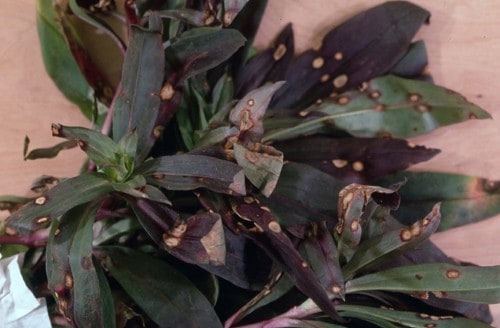
When the plant suffers from the viral infection, its foliage becomes mottled, with yellow, dead spots and ring spot patterns. The only thing you can do is to destroy infected Dianthuses and purchase new, tested seeds.
Greenflies
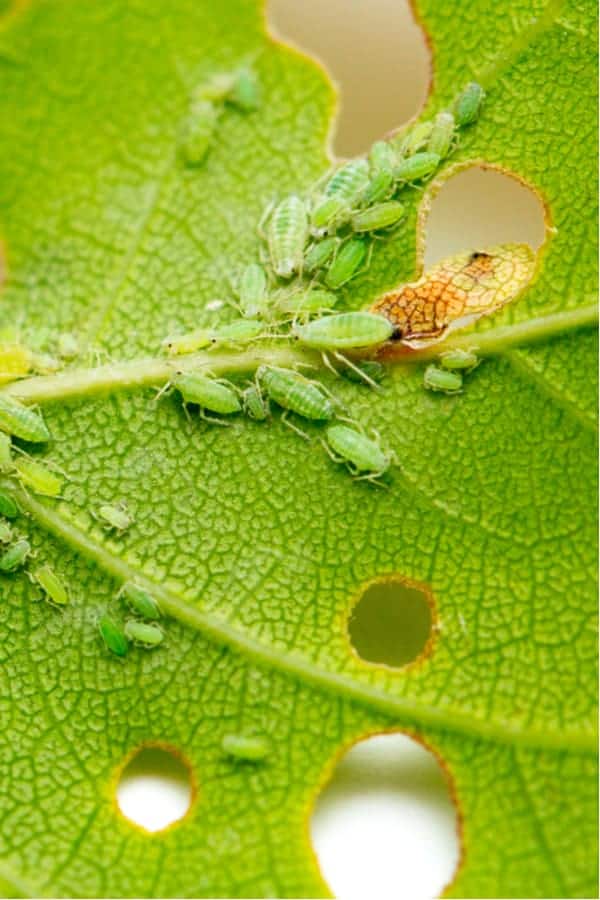
Be prepared to deal with these aphids if you grow Dianthus. They feed on the foliage until withering. Plus, your plant won’t get enough chlorophyll for regular blossom. Spray flowers and leaves with some eco-friendly insecticide to get rid of these creatures.
Rust

You may spot tiny blisters with rust-red spores on the foliage of your plant if the airflow is not adequate. You should apply a quality fungicide to protect healthy flowers, but you can’t do anything for affected ones. Remove and destroy infected leaves.
Snails
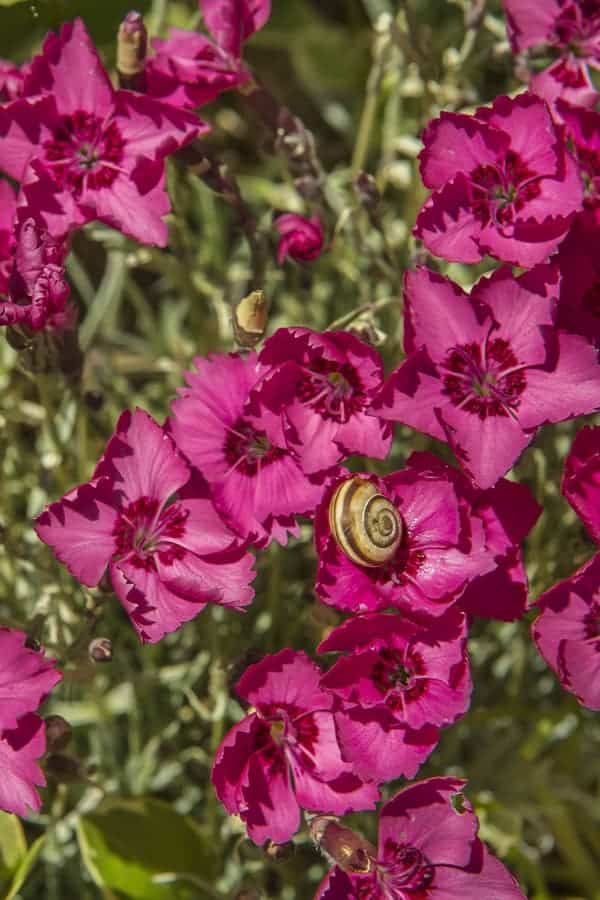
They feed on leaves of young plants and leave them with bare stems. Handpick these creatures when appear, or place beer traps around your flowers preventively.
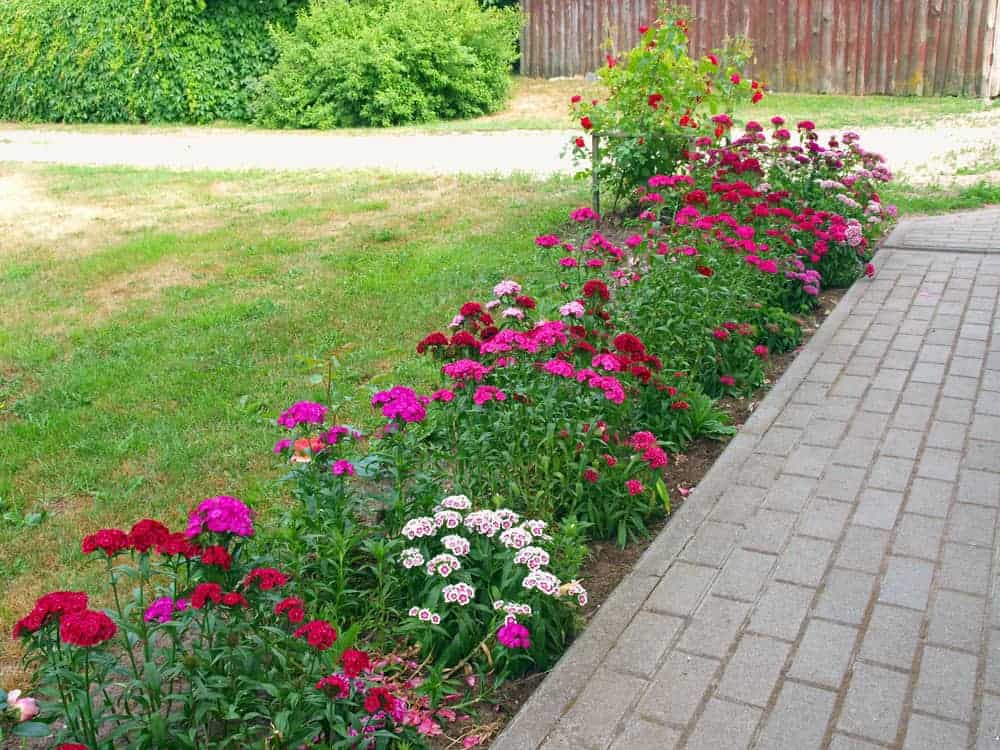
Leave a comment